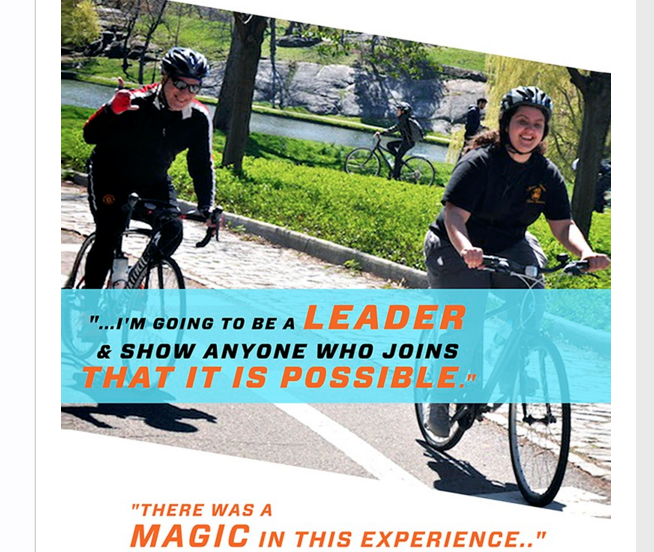Whether you are perusing CauseVox’s blog because you are a startup nonprofit looking to earn some initial investments, or a large and established nonprofit interested in diversifying your income stream, chances are have probably tossed around the idea of using crowdfunding.
Crowdfunding is a great way for organizations of every size, structure, and mission to get in front of a large pool of potential donors. With a solid crowdfunding platform, you should be able to spread the word about your organization’s mission and purpose, acquire donations from established and new donors, and get your name and brand in front of a potentially endless number of people.
Crowdfunding has genuinely redefined fundraising as we know it.
But, what if you are a nonprofit and you have grown used to traditional fundraising methods?
Is it worth it to consider crowdfunding?
Of course, it is!
Diversifying income streams is essential in today’s landscape. In fact, crowdfunding is expected to be close to a 100 billion dollar industry by 2025.
If you are leading the charge at a nonprofit, big or small, it is time to consider using crowdfunding to meet your next campaign goal. Here’s a list of how to begin dabbling in the world of crowdfunding.
Know The Law
Let’s start with your legal rights and obligations as a fundraiser before we dive into crowdfunding techniques.
501(c)(3)
If the IRS has accepted your 501(c)(3) application and you are operating as a tax-exempt organization, you are allowed to collect donations without paying taxes. This includes funds collected through crowdfunding platforms.
If you fall into this category, you are good to go!
Just be sure that all fundraising efforts, whether through traditional or crowdfunding techniques, are geared toward your organization’s purpose as outlined in your IRS paperwork. Missteps here (funding for an outside project not related to your organizational mission) can cost you your nonprofit status.
501(c)(4)
Nonprofits that have not completed the required paperwork, but are operating to encourage social welfare without making a profit may be eligible for some tax exemptions under the 501(c)(4) tax code.
Check with legal or financial counsel to be sure you qualify under this umbrella.
Other Organizations
All other organizations and personal fundraisers have to claim all donations received as business income. It is best to account for all taxes and fees before beginning your campaign in order to factor them into your overall goal.
Also, consider your state’s charitable solicitation registration laws. Each state handles this a little differently, but almost all require organizations to complete paperwork before engaging in any fundraising activities. This includes crowdfunding, which may involve registration in multiple states.
States also set guidelines on giveaway/drawing/lottery procedures, as well as gifts received in exchange for a donation. It is always best to consult your accountant or legal counsel before beginning your campaign.
Crowdfunding For A Cause
If you are leading the charge at an established nonprofit, there’s a good chance that you have used time-tested fundraising methods to procure a steady amount of donations through annual giving and capital campaigns. However, you may be interested in diversifying your income streams.
Crowdfunding is a fundraising technique best-suited for funding projects and increasing your brand’s reach. Nonprofits can use crowdfunding to fund special projects, initiatives, and supplies not covered by current funding.
Let’s look at Renewal Farm, a substance abuse treatment center. They have operated for many years using a steady stream of federal grants. Unfortunately, they recently lost that funding source and turned to crowdfunding with CauseVox to stay in operation. In order to keep the farm up and running, they needed to raise $150,000 by January 31st.
Crowdfunding was the perfect solution to bring attention and immediate money back to the organization until additional grants are secured.
To break it down here’s a few questions to ask yourself to determine if your fundraising idea is crowdfunding material:
- Is this project time-sensitive?
- Is the goal specific and attainable?
- Am I able to clearly explain what the funds raised are going toward?
- Do I have a relatable story to share with potential donors?
THIS is when crowdfunding is successful. Not only are you increasing your reach by using a crowdfunding platform, you are also attracting a (potentially) new donor segment or adding another level of engagement with current donors.
Keep your current annual giving and grant applications going, but consider crowdfunding in special circumstances.
Get Your Story Right
It’s likely been drilled into your head one too many times, but, it can’t be stressed enough. Stories can make or break your fundraising campaign.
Crowdfunding is no different. In fact, successful crowdfunding efforts all have one thing in common- and that is a compelling story.
Now is not the time to inundate your potential donor with facts, numbers, and organizational details (although this should all be readily available on your website or social media).
It is the time to bust out your handy Nonprofit Storytelling handbook and figure out the best way to express your nonprofit’s story and connect it with your current crowdfunding campaign.
Let’s use the Renewal Farm example that was mentioned previously. The goal of your crowdfunded campaign is to stay in operation. Your story must address:
Who will benefit from the donations
Your timeline
How this is necessary for your organization to operate
There are numerous ways that you can go about telling this story.
Videos: Consider creating a video, as they generally work well with crowdfunding campaigns. Videos give your donor a firsthand look at the faces behind your organization and the goal you are attempting to accomplish.
Pictures: If you do not have the capability to create a video, at the very least include pictures of your staff or volunteers working in the shelter (especially if you are concerned with client privacy). Choose pictures that evoke emotion such as this example by OutCycling.

Written Story: It is perfectly acceptable to relay your story through written word. Remember to aim for a clear story that outlines the progression of the problem/issue to the solution/potential outcome.
CauseVox offers a number of blogs, ebooks, and guides to help you maximize your storytelling potential. Check out this helpful Starter Guide to Video Storytelling to get your brain juices flowing.
Use Your Network
Have you tried peer-to-peer fundraising? Chances are, you have already engaged in peer-to-peer fundraising in some capacity- even if it was simply just asking your board members to encourage friends and family to donate to your organization.
Nonprofits of every size may need to leverage every single relationship in order to meet fundraising goals. So, use your network of staff, volunteers, board members, clients, dedicated supporters, family and friends to kickstart your crowdfunding campaign.
Why is it so important to get your stakeholders on board first? Simply put, no one likes to be the first donor. The first several donations of every crowdfunding campaign are the hardest to get, and for good reason. Why invest in a cause that isn’t being backed by those already associated?
Not only does your organization’s team need to provide the initial donations, they also need to be the ones to spread the world. Ask every member to share the campaign through social media or email and set goals for procuring donations.
When sharing your campaign information, ask your donors to add a personal message explaining:
- Why they donate money and/or time to your organization
- Why this particular campaign is important
- Why everyone should jump on the bandwagon
Adding a message creates accountability, solidifies their commitment, and creates an added level of engagement.
Be Transparent
Your crowdfunding platform should allow you to link up your website and social media pages. Therefore, it isn’t necessary to list every single detail about your organization on your campaign homepage. Instead, ask your donors/prospects to visit your other pages for more information.
However, you may want to detail exactly how you are going to be using this particular campaign’s funds. If you are purchasing that shelter furnace, it is a good idea to explain where it will be purchased, the purchase price, and any discounts you may be getting.
On another note, those looking to donate money want to know that the organization/cause they are donating to is well-run. Consider adding a link from your website directly to your IRS Form 990. With numerous organizations vying for dollars, it is essential that your organization is as fiscally transparent as possible.
Consider Engagement With Donors During And After The Campaign
If all goes well- and it should if you use the techniques outlined above- your nonprofit will likely see great and immediate results. Next, you need to figure out how to retain your donors.
It all boils down to how you treat them.
Every single donor, whether they contributed $1 or $1,000 is worthy of appreciation, respect, and yes, love! Donor retention is essential for every nonprofit. Here is a list of tried-and-true retention strategies:
- Send a personalized “Thank You” immediately after receiving a donation. CauseVox users will notice that this is a feature of the platform.
- Respond to questions/inquires/statements about your organization and campaign as soon as they are brought up.
- Be active on social media and your crowdfunding platform in order to combat any negative feedback, answer questions, and support your organization.
- Make every communication count.
- Don’t inundate with spam. Instead, nurture your new donors.
- Keep donors updated on your progress and results.
- Always leave donors with a call to action. Examples include:
- “Spread the Word” (with a link to your crowdfunding site)
- “Like us to stay connected to our success stories” (link to Facebook).

Do you feel overwhelmed? Don’t be! This is when the fun begins.
Nonprofits and crowdfunding aren’t at odds. There is potential for nonprofits of every size to use crowdfunding platforms, or simply infuse crowdfunding techniques, into the next campaign.
The key is to start small, examine your organization’s needs and pick a project that will immediately benefit your members/clients, pick the right story to get your mission across, engage those closest to your organization first, be transparent, and keep the love for your donors flowing well after the campaign is over.
Ready. Set. Go!




